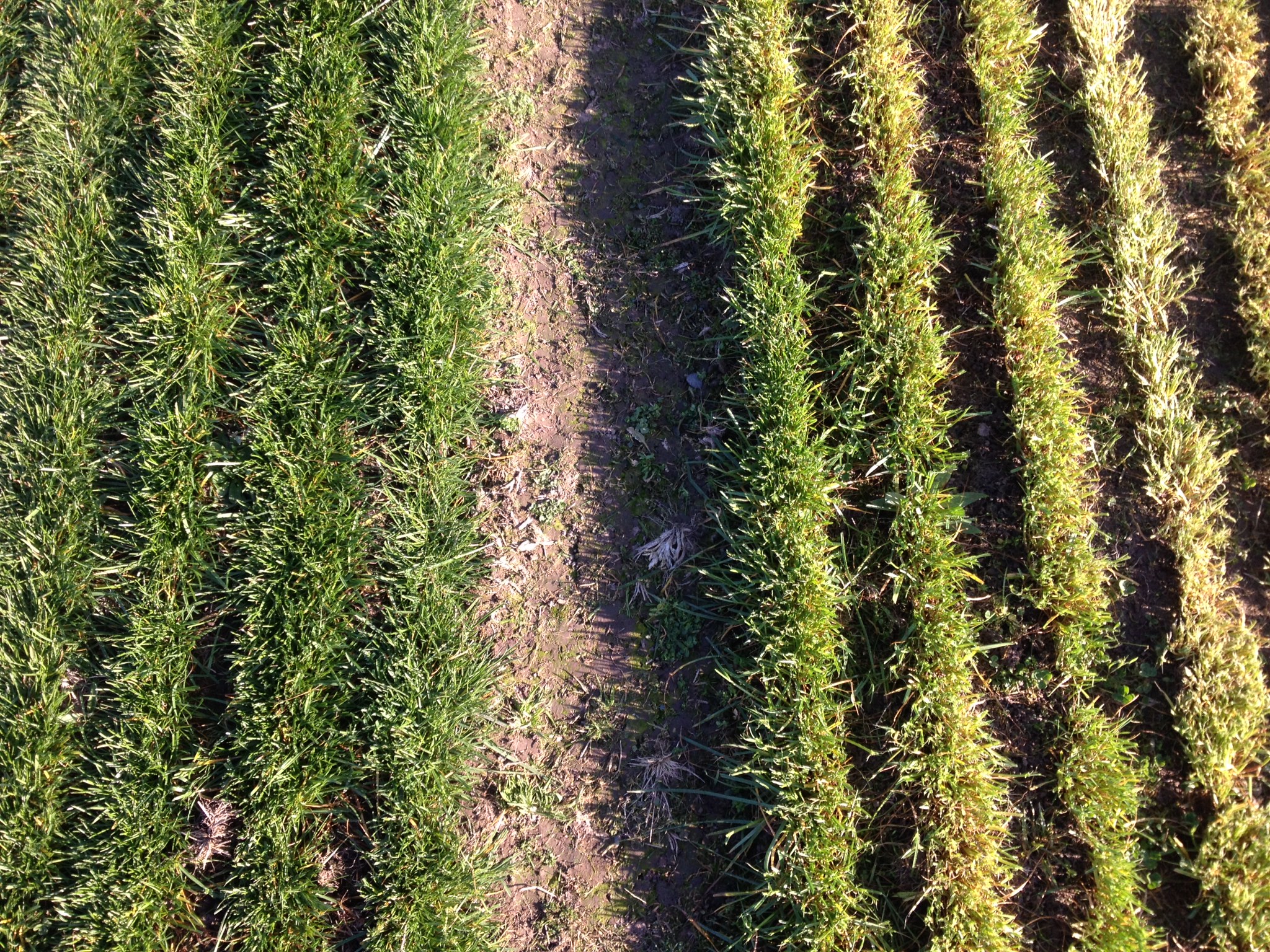Aber High Sugar Grasses are fast gaining ground in New Zealand, as increased regulation puts the spotlight on pasture with clear environmental benefits.
The innovative ryegrass varieties are used on farms throughout the country, due to their ability to increase meat and milk production while lowering emissions from grazing animals.
Not all grass is the same
Exclusive to Germinal, Aber High Sugar Grasses are perennial ryegrasses bred to produce more water-soluble carbohydrates (WSC) or sugar energy – delivering up to 17 percent more WSC than a conventional diploid ryegrass.
The high sugar content creates a better balance of energy and protein in the rumen, allowing the microbes responsible for the breakdown of forage to operate more efficiently. As a result, more grass protein is converted to meat and milk and less is excreted into the environment.
Aber High Sugar Grasses were first developed more than 30 years ago by Germinal’s research partner, the world-renowned Institute of Biological, Environmental and Rural Sciences (IBERS) in Wales. They are now also bred locally at the Germinal Horizon research site in Lincoln, as part of Germinal’s commitment to breed new varieties for New Zealand, in New Zealand.
Aber High Sugar Grass research continues at IBERS, and new product developments are applied to Germinal’s on-the-ground trials in New Zealand – providing local farmers with access to world-leading advances in plant breeding.

Improved animal performance
Aber High Sugar Grasses have high digestibility – a measure of pasture quality and nutritional value that is a key factor in milk and meat production.
A digestibility gain of one percent is worth three percent of yield. Aber High Sugar Grass varieties have up to 5.5 percent higher digestibility than conventional ryegrass varieties, which means livestock absorbs more energy from the feed. This leads to improved animal production.
New Zealand research shows that lambs grazing High Sugar Grass finished 17 percent faster and 19 percent heavier than lambs grazing a conventional ryegrass variety. Cows fed Aber High Sugar Grass in an AgResearch trial produced 10 percent more autumn milk solids than cows eating standard perennial ryegrass.
Environmental mitigation
Grazing animals are highly inefficient when it comes to converting plant protein into milk or meat. Only about 25 percent of plant protein is turned into animal protein, with the rest excreted into the environment as methane, nitrous oxide or ammonia.
The high WSC level in Aber High Sugar Grasses provide a more readily available form of energy, which increases protein capture and reduces the amount of waste.
The environmental advantages of Aber High Sugar Grasses have been scientifically proven in independent New Zealand trials. An AgResearch trial showed nine percent lower methane emissions from sheep fed Aber High Sugar Grass compared to those fed conventional ryegrass varieties. Another study found rumen ammonia was significantly lower in cows grazing Aber High Sugar Grass.
Profitable pasture
Three Aber High Sugar Grass varieties are available in New Zealand – AberGreen, AberMagic and AberGain. AberGreen and AberGain are available with AR1 endophyte.
The 2021 DairyNZ Forage Value Index (FVI) identifies AberGain AR1 as a leading five star cultivar for the South Island and lower North Island – making it one of the most profitable ryegrass varieties for dairy farmers in these regions.
According to the FVI results, a dairy farmer in the upper South Island could generate up to $604 of additional profit per hectare, per year by selecting AberGain AR1 for their pasture renewal programme.
A five star rating is achieved through a combination of high dry matter yields, metabolisable energy content and persistence. These traits contribute to a dairy farm’s bottom line by increasing the amount and quality of feed available – ultimately resulting in more milk – and reducing reliance on imported feed.
Bred for enduring persistence
As farmers ourselves, we know first-hand the ongoing challenge of pasture persistence. Our Aber High Sugar Grasses feature a superior root system, resulting in a more robust pasture that is more resilient in tougher farming conditions.
Furthermore, dense tillers lead to increased ground cover, greater tolerance to pugging, and improved recovery after grazing.

The increased tiller density of AberGreen (left) compared to a standard NZ ryegrass (right) provides superior ground cover, meaning less room for weeds, greater tolerance to pugging and more light captured for grass growth.
Aber High Sugar Grasses are suitable for all farm systems. See our product page for further information or contact us on 0800 171 825.
